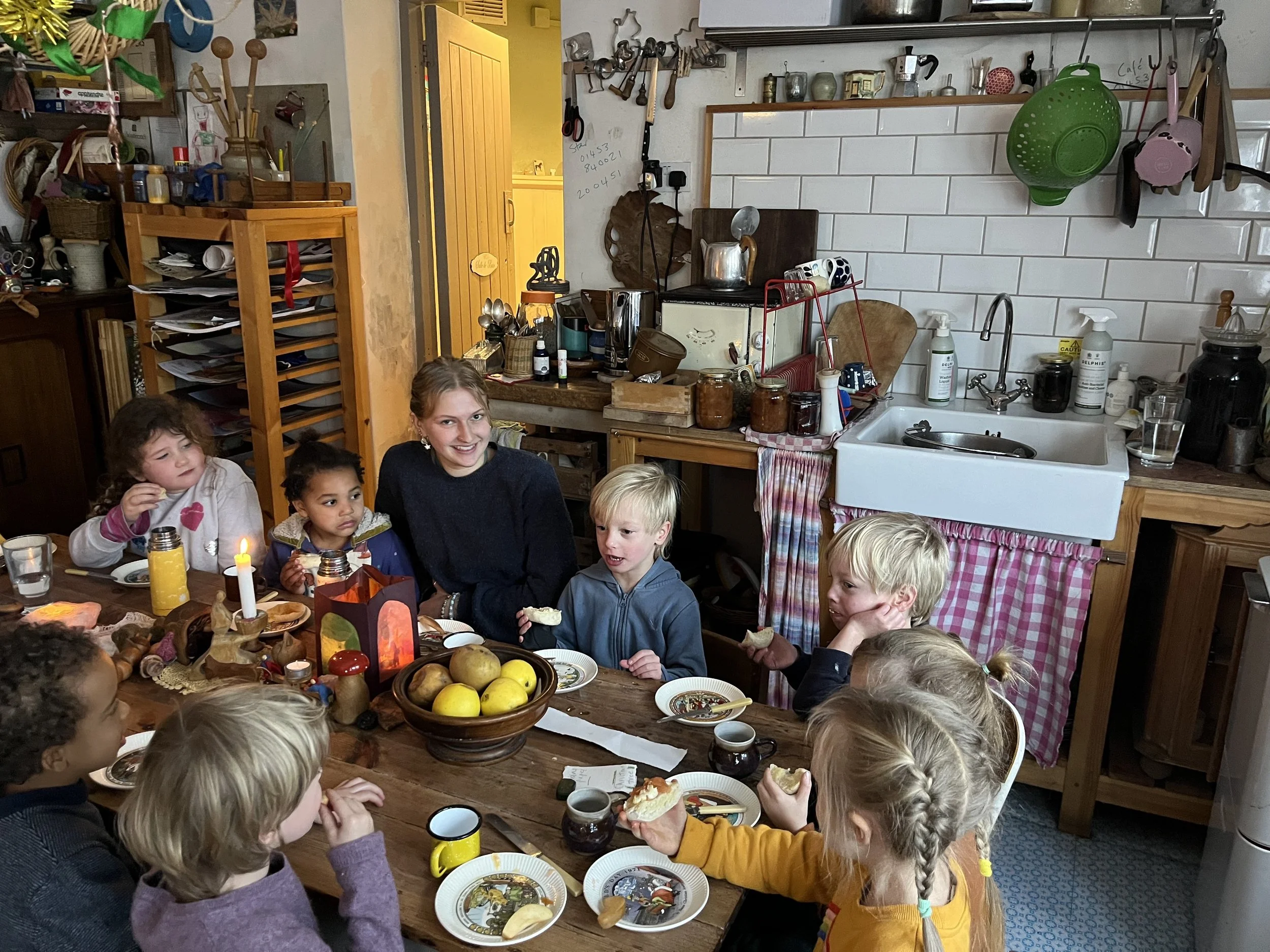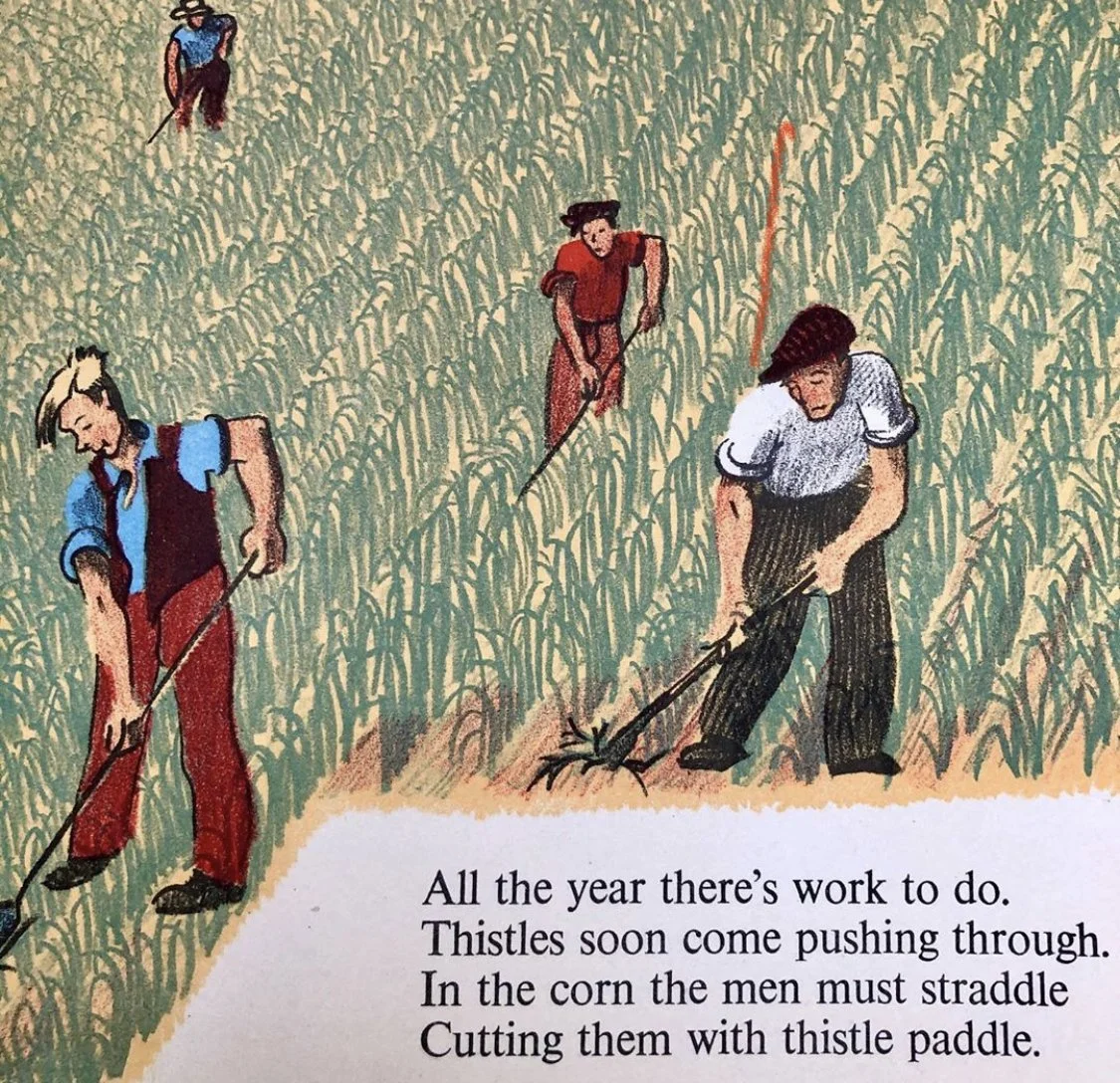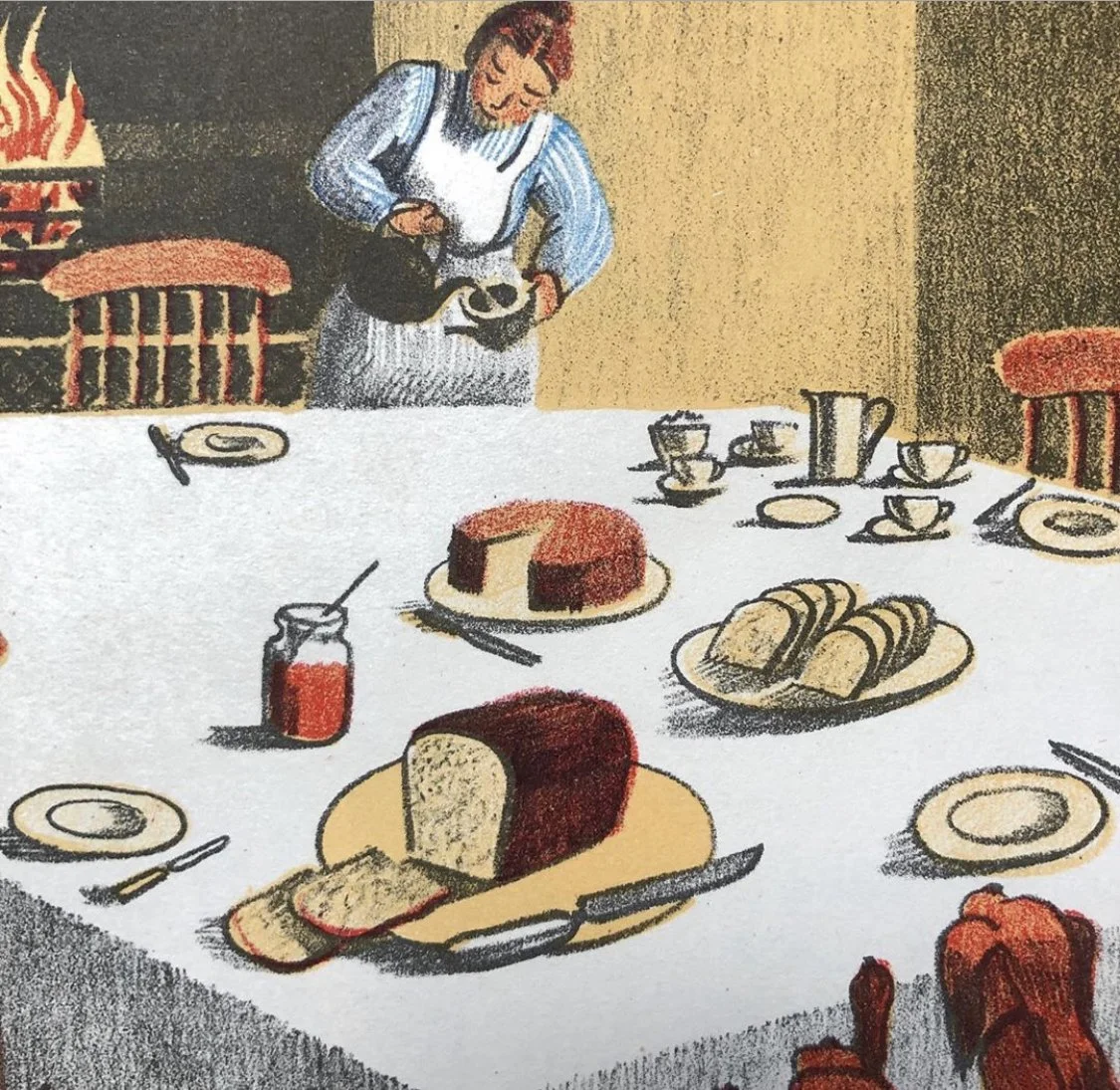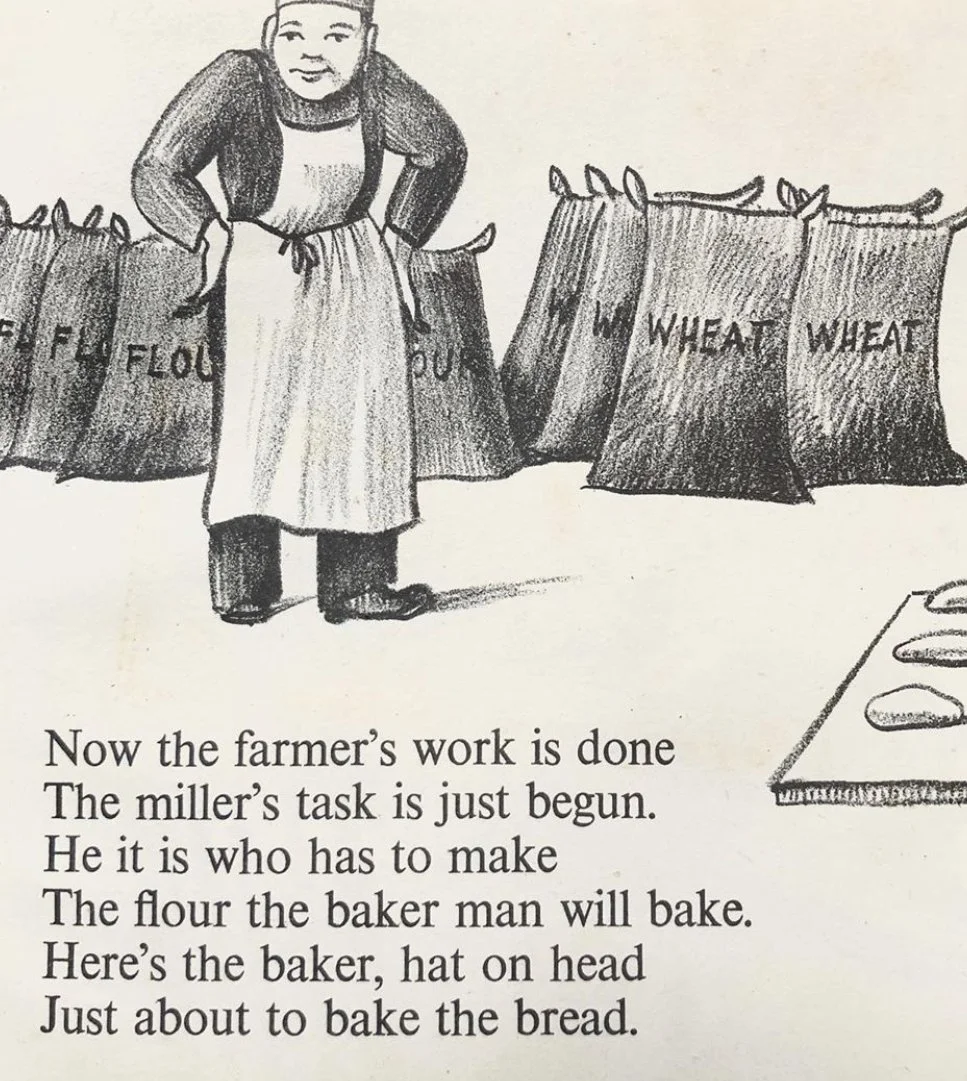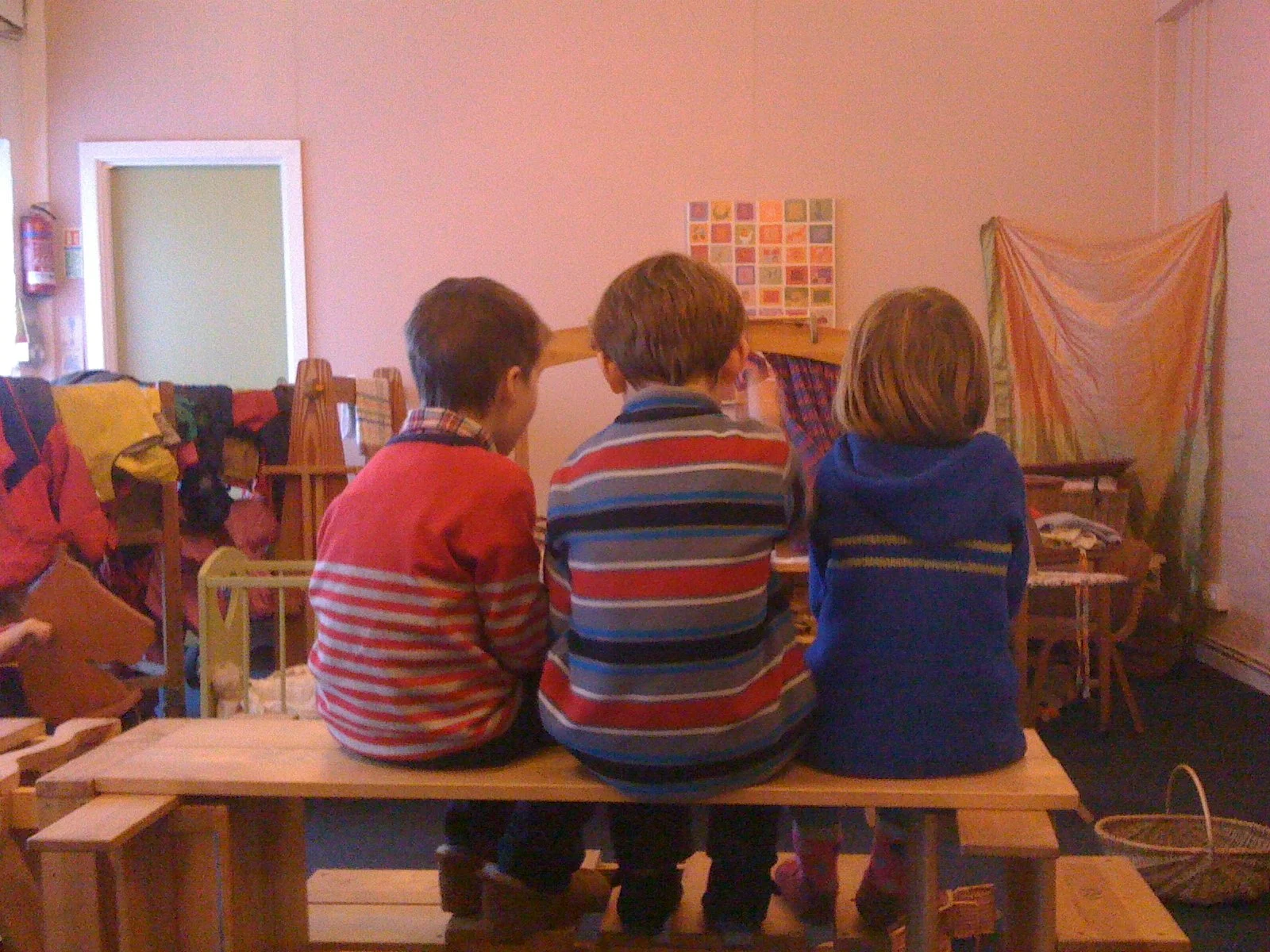The children at snacktime on ‘bread’ day. We welcome students interested in early years.
Hands are for work and play
On the book shelf
In the larder
Make and mend
3 to 6 years
Starting at 3 years old
The summer is a time of long days in the sun with bare feet and in the wilderness of a beach, wood or field. The children usually grow particularly tall in the summer. When harvest has been done and the season turns to suggest autumn is on the way, it is time to work. The three year olds engage their will to work in the autumn with the work of the farmer and miller to grind flour to make bread. This leads to the harvest celebrations and making of a Michaelmas loaf.
The first year in the kindergarten the balance needs to be more time breathing out and shorter times for breathing in, the adult led activities. This balance changes slowly as the children move through the kindergarten, school so that as teenagers they can healthily spend more time on focused activities.
Rhythm helps all of us feel secure. Especially for the young child, it makes the world feel like a safe place, in times of adversity, this is ever more important. A child who feels safe is able to learn, explore, be creative and take risks within the safety of a healthy rhythm. Rhythms rely on regular repetition for their very existence. When the child first begins kindergarten, it takes time to settle, it takes time to learn the daily rhythms. The more the child attends, according to the agreed schedule with the teacher, the shorter the time to settle will be. There is an importance about a rhythm of three days and three day rhythms are worked with throughout the Steiner Waldorf curriculum. If a three year old attends the kindergarten for a minimum of three days per week, then this is something that the child can feel comfortable with right down into his body. This means that when a child wakes up in the morning it will not be a question “Is is a kindergarten day?” because the body will know. Irregular attendance or attendance at more than one setting does not maintain this comfortable feeling to develop.
The golden years of childhood
As a child settles into kindergarten, the social group of children becomes important. Regular rhythmical attendance helps to find a place in the social group and make good connections. This becomes more significant for the golden years of childhood. The gift for children is time to play and the social confidence to negotiate in the dynamics of play.
The last year of kindergarten
As a child turns 6 years old in their last year of kindergarten, the peer group of older children becomes the priority and also leading the play with their own ideas. I have found that as children have more time in front of a screen they are less likely to come to their own ideas for play. Once the play starts it soon develops with other children, helping to build, making tickets, negotiating the use of equipment if they are needed by other children in their game. Once the six year olds have got the game going they leave to do their craft work and domestic activity for snack, always available to help the younger children.
